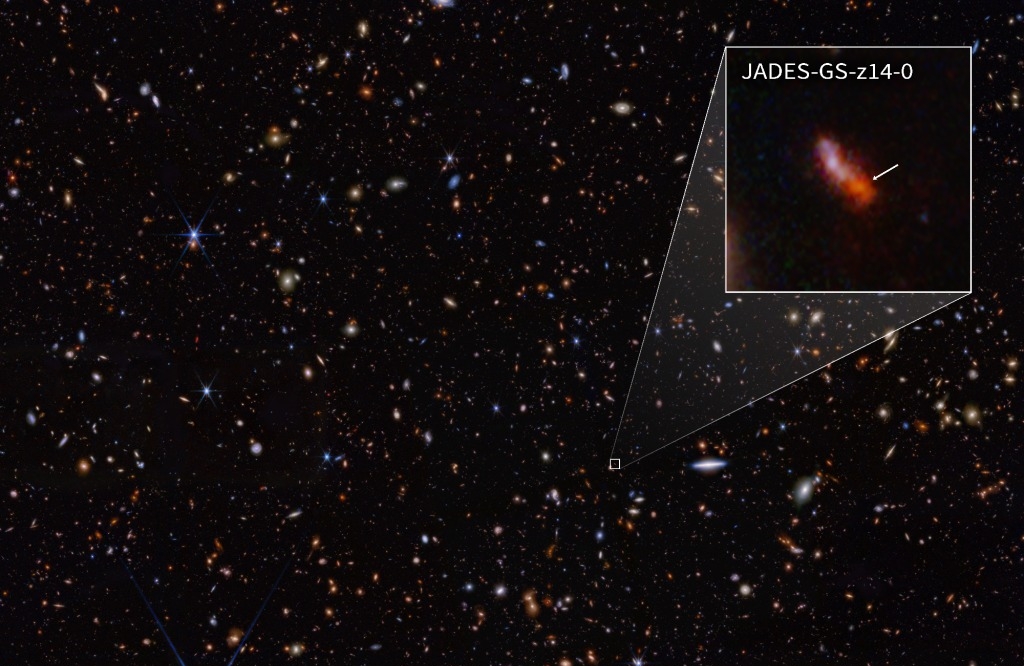
With its infrared vision, the James Webb Space Telescope has looked further than ever before and discovered the most distant known galaxy, a primordial object that is forcing cosmologists to revise their models of the early stages of the universe’s evolution.
Light from the JADES-GS-z14-0 galaxy took 13.5 billion years to reach Earth. This means that James Webb saw this large group of stars as they were only 295 million years after the Big Bang that led to the birth of the universe.
The previous record holder was a galaxy imaged 325 million years after the Big Bang.
Since the light from JADES-GS-z14-0 traveled 13.5 billion years to reach Earth, the galaxy’s distance is expected to be 13.5 billion light-years.
But in reality, the distance is much greater due to the continuing expansion of the universe and exceeds 34 billion light-years.
Galaxy JADES-GS-z14-0 appears as a faint red dot in James Webb’s image. Source: NASA, ESA, CSA, STScI, Brant Robertson (UC Santa Cruz), Ben Johnson (CfA), Sandro Taccella (Cambridge), Phil Cargill (CfA)
Bright for his age
The international research team that broke the distance record says it was surprised by the brightness of the object.
Many distant galaxies are particularly bright due to radiation emitted by central black holes as they devour interstellar material. In contrast, in the case of JADES-GS-z14-0, the light appears to come from many young stars.
“All this starlight indicates that the galaxy is hundreds of millions of times more massive than the Sun. This raises the question: How did nature manage to create such a bright, massive galaxy in less than 300 million years?” NASA press release Italian astronomer Stefano Cargnani and his American colleague Kevin Heinlein.
They also point out that the galaxy’s stars do not appear to be composed entirely of hydrogen and helium, the only chemical elements that originated in the Big Bang.
“The presence of oxygen so early in the life of the galaxy is surprising and indicates that multiple generations of massive stars had already lived out their lives before we observed the galaxy,” the researchers said.
“All these observations tell us that JADES-GS-z14-0 is nothing like the types of galaxies predicted in the young Universe by theoretical models and computer simulations.
It will be impossible to view JADES-GS-z14-0 using telescopes other than James Webb.
Due to the expansion of the universe, galactic light has shifted to infrared wavelengths that can only be recorded by the new pride of astronomy.
As Dr. Brad Robertson of the University of California, Santa Cruz commented: “We could detect this galaxy even if it were 10 times fainter.”
“This means we could see other examples, even earlier in the history of the universe – perhaps the first 200 million years.”
This finding was described in three separate studies published as preprints on the arXiv repository. They are available here, here And here.

“Avid problem solver. Extreme social media junkie. Beer buff. Coffee guru. Internet geek. Travel ninja.”





More Stories
Play Age of Mythology: Retold Playtest starting today!
Impressive Maniskin Concert in Greece
What does it mean if we decide not to remove third-party cookies?